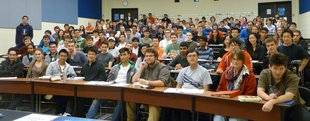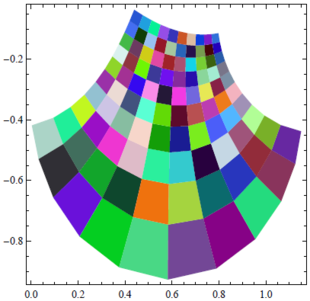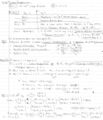12-240/Classnotes for Thursday October 18: Difference between revisions
From Drorbn
Jump to navigationJump to search
| Line 6: | Line 6: | ||
2) L(cx)= c.L(x) |
2) L(cx)= c.L(x) |
||
3) L(0 of V) = 0 of W |
3) L(0 of V) = 0 of W |
||
Proposition: |
|||
1) property 2 leads to property 3 |
|||
2) L: V -> W is a linear transformation iff <math>\forall\,\!</math> c <math>\in\,\!</math>, <math>\forall\,\!</math> x, y <math>\in\,\!</math> V: L(cx + y)= cL(x) + L(y) |
|||
== lecture note on oct 18, uploaded by [[User:starash|starash]]== |
== lecture note on oct 18, uploaded by [[User:starash|starash]]== |
||
Revision as of 22:38, 29 October 2012
| |||||||||||||||||||||||||||||||||||||||||||||||||||||||||
Linear transformation
Definition: A function L: V-> W is called a linear transformation if it preserve following structures:
1) L(x + y)= L(x) + L(y) 2) L(cx)= c.L(x) 3) L(0 of V) = 0 of W
Proposition:
1) property 2 leads to property 3 2) L: V -> W is a linear transformation iff c , x, y V: L(cx + y)= cL(x) + L(y)





